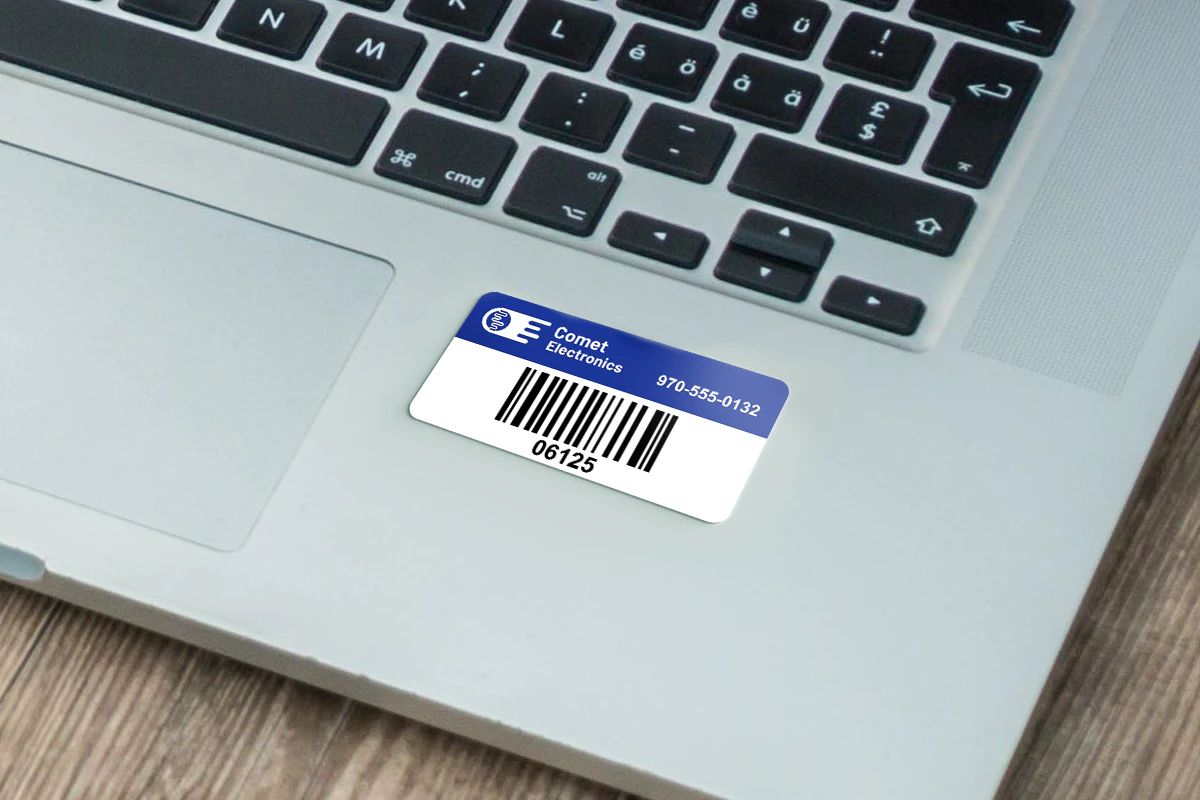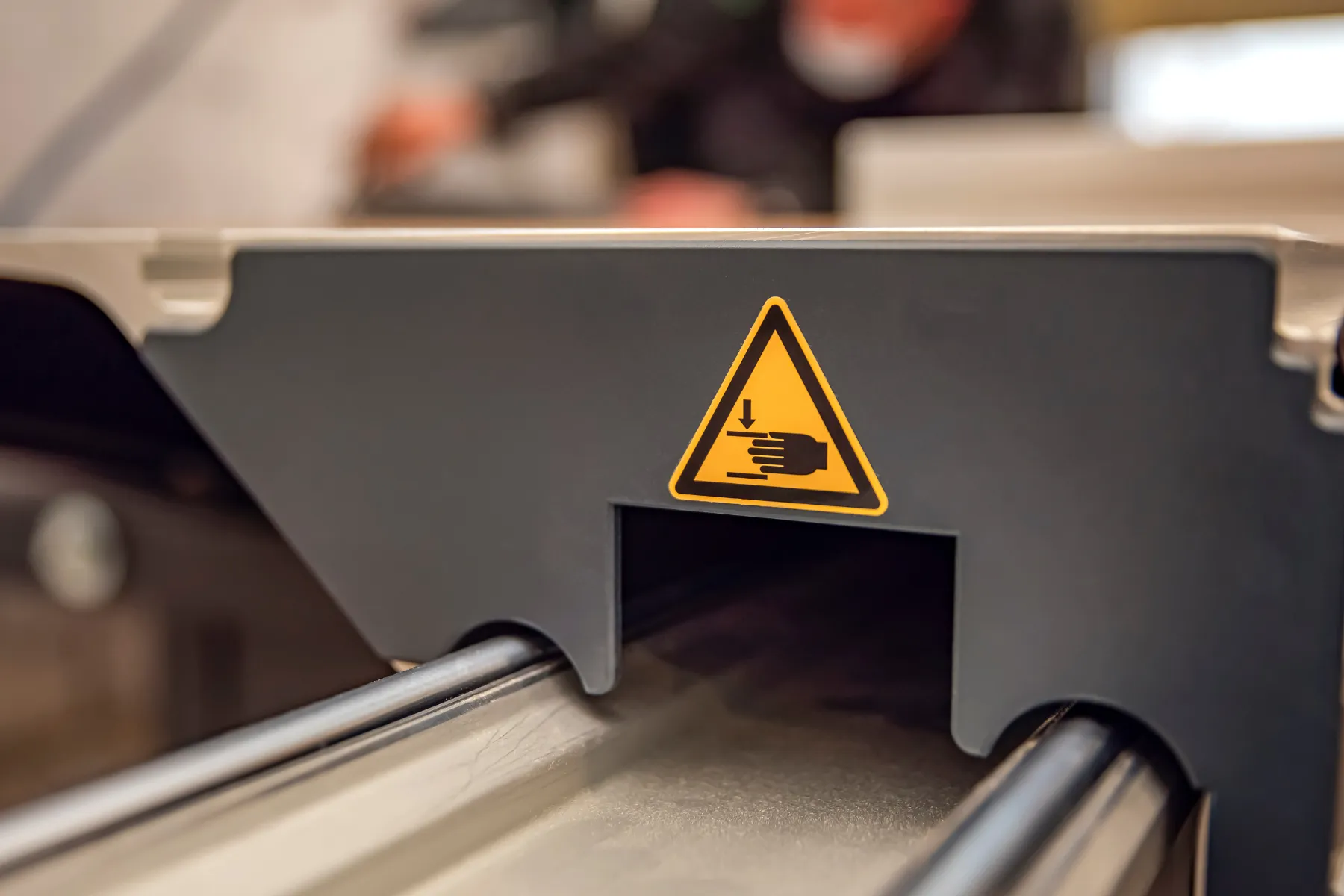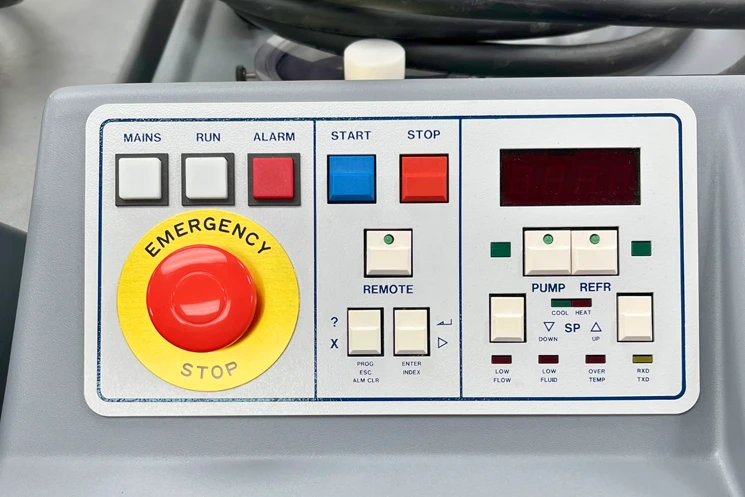Oil and gas asset management works by assigning each piece of equipment—whether it’s a valve, tool trailer, or generator—a unique ID, labeling it with that ID, and tracking it across its life cycle.
This gives teams visibility into where things are, what condition they’re in, and when they need attention—without relying on memory or guesswork.
How the Process Actually Works, Step by Step
1. Identify what needs to be tracked
Start with physical assets that move, wear out, or are expensive to replace: pumps, skids, field monitors, mobile lighting rigs, etc.
2. Tag each item with a permanent ID
Use durable barcode or serialized asset labels that won’t peel or fade in heat, rain, or chemical wash-downs.
3. Log the ID into a tracking system
This could be Excel, a cloud-based sheet, or an asset management system. Link the ID to fields like:
- Location
- Assigned team or user
- Maintenance schedule
- Purchase and warranty data
4. Scan during audits or check-ins
Teams scan barcodes in the field to confirm status, update usage logs, or flag maintenance. No clipboards needed.
5. Update as needed
Whenever gear is moved, serviced, or retired, update the log so data stays current.
That’s the backbone. Simple, scalable, and built around clear labeling.

How Durable Labels Make It All Possible
Without a label, tracking falls apart. People forget serial numbers. Stickers peel. Markers fade.
Here’s what a proper asset label handles in oil and gas:
- Sun exposure on outdoor tanks or trailers
- Chemical spills near refineries or pumps
- Heat and pressure near engines and skids
- Dirty gloved hands moving gear around all day
Polyester or anodized aluminum barcode labels are standard because they hold up under these conditions. Labels must stick, scan, and survive long after the install crew moves on.
How a Midstream Operator Cut Audit Time in Half
A midstream company managing over 5,000 assets across five states was losing time and visibility. Trailers got swapped between yards. Pumps missed scheduled service. Audits were a scramble.
They tagged everything with high-durability barcode labels and loaded asset info into a simple Excel-based tool. Field techs scanned gear during inspections and maintenance visits.
Result:
- Audit time dropped by 50%
- Equipment downtime from missed service fell 30%
- Compliance reporting improved—and labels were still readable a year later
It wasn’t complex software. It was clear labeling tied to a system their team already used.
How to Roll Out a Labeling-Based Asset Management Plan
Here’s what the rollout typically looks like:
- Do a quick audit
Walk the site and list what’s in use, what’s moving, and what breaks often. - Choose the right label for the job
Polyester with laminate for heat and solvent resistance. Aluminum tags if it’s extreme. - Assign and apply IDs
Every asset gets a unique code—no duplicates. Place the label where it can be scanned easily but won’t rub off. - Log the data
Start basic: barcode, description, location, service interval. Build out later. - Train the team
Show them how to scan, log, and check items. Keep it simple. - Review quarterly
Update logs, replace damaged tags, and check for gear that’s gone missing.
Common Asset Labeling Use Cases in Oil & Gas
| Asset Type | Labeling Purpose |
|---|---|
| Tool trailers | Confirm inventory, prevent over-ordering |
| Portable pumps | Track last service date and next due |
| Field laptops/tablets | Tie digital systems to physical asset |
| Tanks and skids | Ensure regulatory ID and location is visible |
Rolling Out Asset Labels for Field Equipment?
If you’re setting up or cleaning up your asset management process, the first step is making sure your labels hold up. A tracking system is only as good as the tag that stays put and scans clearly. That’s why many field teams start with asset tracking labels for oil and gas—made to resist the heat, grime, and movement that break down ordinary tags.
Oil and Gas Asset Management FAQs
It’s the process of labeling, logging, and maintaining physical equipment—so teams know where everything is, what shape it’s in, and when it needs attention.
Labels give each item a visible, scannable identity. Without them, tracking systems are useless in the field.
Polyester with laminate or anodized aluminum. Both resist abrasion, solvents, and heat better than paper or vinyl.
No. Many operators use Excel or Google Sheets paired with scanners. The key is keeping records updated and labeling consistently.
Quarterly works well for most teams. Some do monthly scans on mobile or safety-critical gear.
Tracking and accountability can break down quickly when asset labels are damaged, faded, or missing. Without a clear barcode or readable identifier, assets become hard to locate, audit, or service—putting inventory accuracy, compliance, and operational efficiency at risk.
That’s why label durability is just as important as your tracking system. Exposure to abrasion, chemicals, heat, and UV light can all degrade label performance if materials aren’t chosen correctly.
If a barcode becomes unreadable or scannability is compromised, read this guide on how to fix a damaged barcode on an asset tag to maintain system integrity.
If an asset tag has detached from the surface, learn how to reapply a fallen asset tag properly for long-term adhesion.



